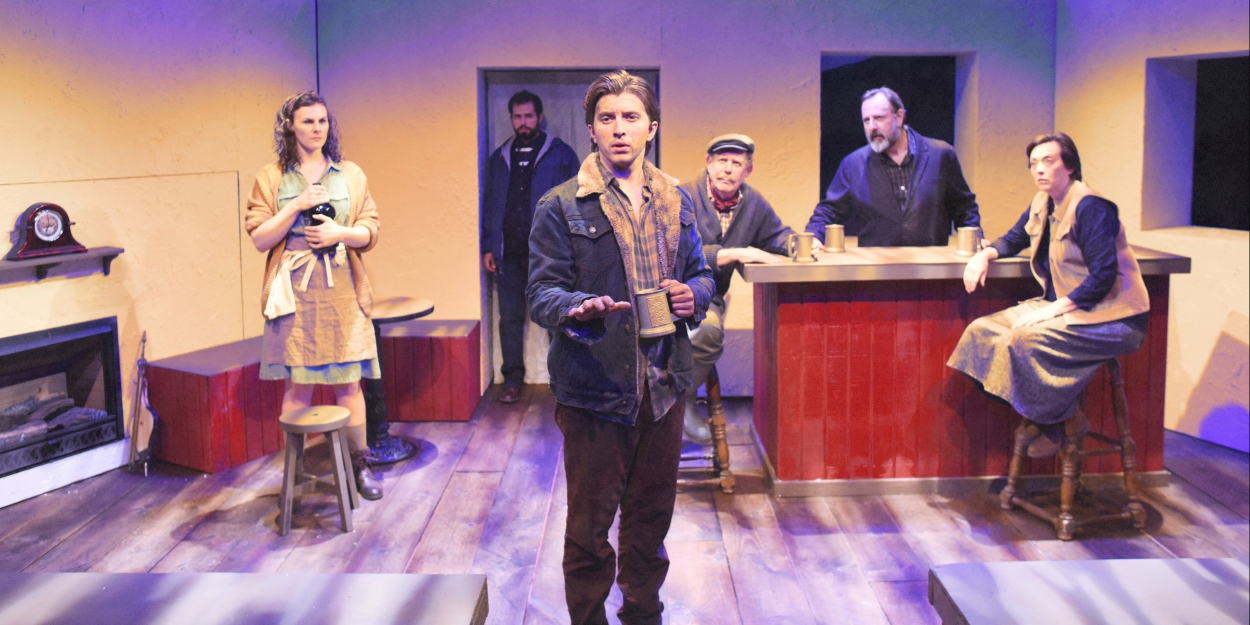By Roslyn Blyn-LaDrew
This was my first visit to the Sedgwick Theater in Mt. Airy and my first sample of the Quintessence Theatre Group’s work, and I can only say I wish I had experienced both sooner. Not only was the performance of J. M. Synge’s 1907 classic, The Playboy of the Western World, excellent, but the atmosphere inside this converted Art Deco movie theater was fun.
There is a bar/snack bar in the lobby, with hot drinks, pastries, and some harder stuff. For the full weekend-long Synge Festival Days (Oct. 17-19 and Oct. 25-27), you could even get a complimentary pint of Guinness. There’s also a piano! Cool — do guests sometimes play during intermissions?
Having seen The Playboy of the Western World numerous times, and studied and taught it, I didn’t think there would be too many surprises. But lo and behold (or, for those who know the play’s McGuffin, should I say “loy and behold”?), I was hooked from the unexpected opening scene to the closing scene. I won’t reveal the additional touches, for fear they would be spoilers, and in hopes that readers had the chance to see the play (last show October 27th).
The acting was delightful, bursting with enthusiasm and emotion. The youthful exuberance of the characters Honor, Susan, and Sara puts paid to the notion that they are in any way “minor” characters in this saga. Oh, and if you ever wondered what Shawn Keogh’s legs would look like, this was your opportunity!
One suggestion I had for the audience was to try to arrive early enough to browse through the program thoroughly before the play started, especially the glossary. It’s always good to see glossaries for plays of this vintage because there many layers of vocabulary we no longer use today.
These include words derived from Irish Gaelic itself (e.g. loy, cnuceen), farming terms (e.g. banbhs, cleeve), and general turn of-the-20th-century English that might have been used across the UK (e.g. loosed kharkis (sic), liefer).
And of course there were Irish geographical terms, ranging from the well-known (e.g. Connaught) to the less well known (the Stooks of the Dead Women, which, according to Synge’s travel account are in West Kerry).
For other first-timers to the Sedgwick, I’ll note that I was impressed by the number of fun-looking small restaurants nearby. I would heartily recommend taking advantage of this unique opportunity, to not only see the well-known plays and some of Synge’s lesser-known works, and also to check out the trendy diversity that West Mount Airy is famous for.
If you come for the Synge Festival Weekends, I’d make a day of it, with the local eateries, and, oh yes, a few intriguing-looking antiques shops and crafts boutiques. I’m looking forward to the next segment of the Synge Festival, the Triptych of Riders to the Sea, In the Shadow of the Glen, and The Tinker’s Wedding
And I’m already making plans to see Quintessence’s first performance for 2020, Rachel, by Angelina Weld Grimké, first produced in 1916, which was the “first play by an African-American author with an all-black cast to be performed before an integrated audience.”
Congratulations to Quintessence for its fine acting and thought-provoking selection of material, especially in this era when diversity is such a key word.
Sedgwick Theater, 7137 Germantown Ave., Philadelphia, 215-987-445- or www.qtgrep.org; show dates 9/18 to 10/27.

